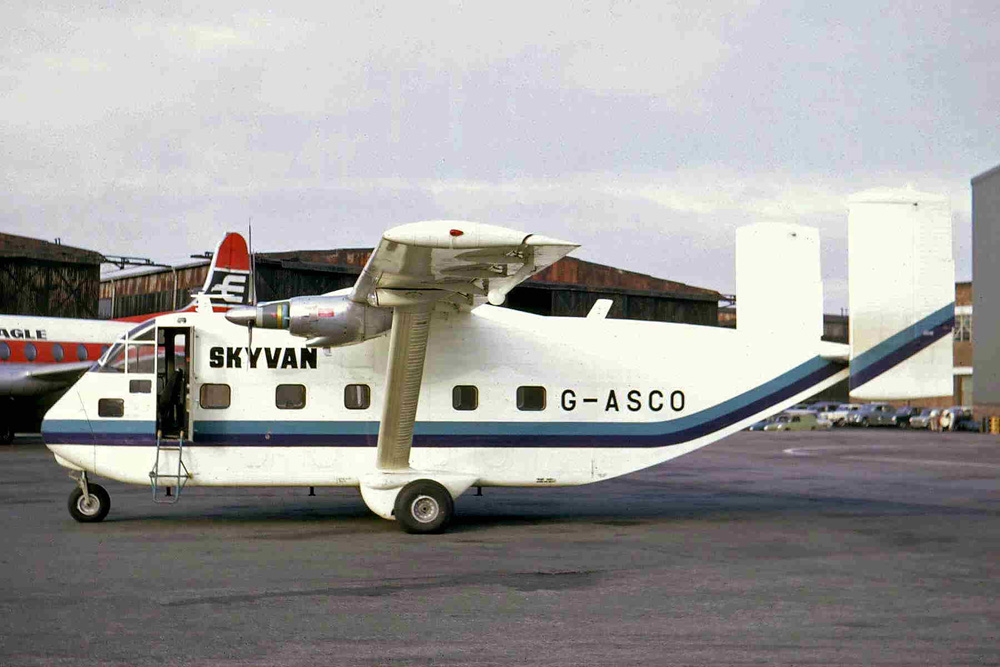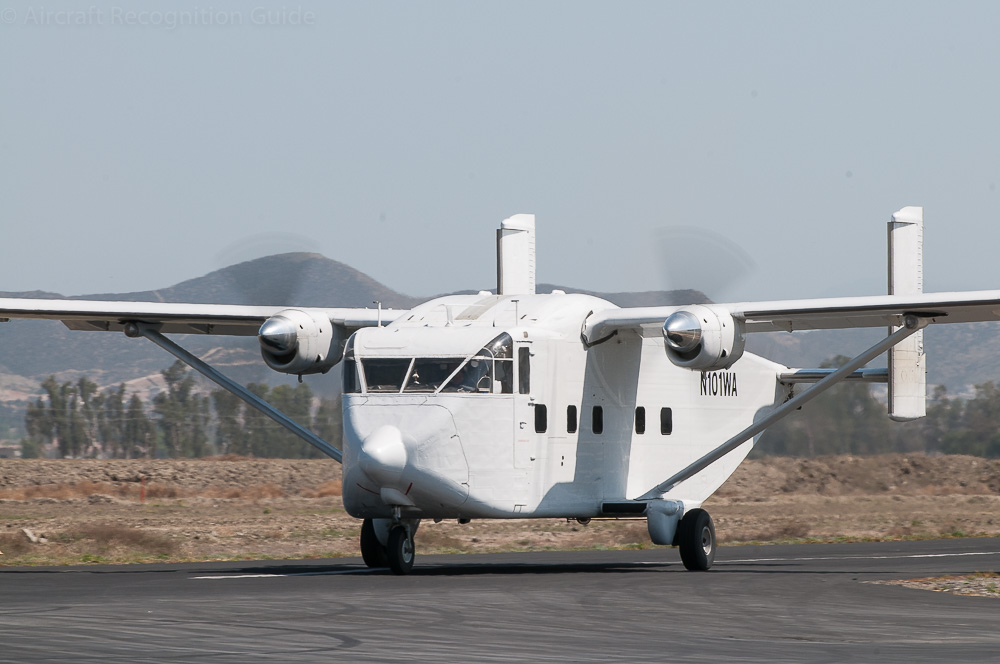
Short SC7 Skyvan/Skyliner
The Skyvan is often called a flying shoe box and when you see it you know that is for a reason. This utility/transport aircraft has a short fuselage with a square cross section. Long, slender wings are attached on top of it, passing above the cabin. They are braced to the stubs at bottom of the fuselage, where also the fixed landing gear is attached. The rear fuselage slopes up for easy loading and unloading, whether it be cargo or parachutists. At the end is an H-tail. The front fuselage is somewhat pointed, with many cockpit windows, including eyebrow ones. The gear is fixed.
Different versions
The different versions of the Short Skyvan can be recognised by looking at:
- the shape of the nose
- the location of the landing lights
- the shape of the engine nacelles
- the shape of the tail
- the number of wheels on the nose gear
- the presence of a cabin door in the left rear fuselage
- the size of the cargo/baggage door in the rear, bottom fuselage
SC7 Skyvan Series 1
This was the prototype of the Skyvan, powered by two Continental piston engines. It is also somewhat different than the subsequent series than the engines, as the nose is more blunt (yes, that is possible) and has two landing lights below the cockpit windows. Additionally, the Series 1 has the horn balance of the elevator outside the vertical stabilisers. The nose gear has two wheels. Finally, the Series 1 has round cabin windows.
A Short SC7 Skyvan Series 1 with piston engines.
SC7 Skyvan Series 1A
From the onset it was planned to fit the Skyvan with turboprop engines. Therefore the Series 1 prototype was equipped with Turbomeca Astazou engines, with their characteristic long slim prop spinners and circular air intakes. This version was designated Series 1A.
The Skyvan Series 1A retains the more blunt nose with landing lights, round cabin windows and horn balance of elevators outside the vertical stabiliser, but has Turbomeca turboprops. (photo: Ken Fielding/WikiMedia)
SC7 Skyvan Series 2
The first production version of the SC7 had improvements over the Series 1A. Firstly the nose became somewhat more pointed thus streamlined, which also resulted in a different cockpit window arrangement. The landing lights were moved to the wing attachment points of the struts. The cabin windows were changed to rectangular ones and the nose gear has only one wheel. The Series 2 kept the Turbomeca Astazou engines though.
This is a more familar Skyvan shape, with the more pointed nose, rectangular cabin window and single wheel nose gear. Yet the Skyvan Series 2 still has the slim Astazou engines. (photo: Ken Fielding/WikiMedia)
SC7 Skyvan Series 3, 3A, 3M & 3M-200
Skyvan Series 2's Turbomeca engines proved to be underpowered in hot conditions. Therefore the Series 3 was developed, with Garrett TPE331 engines. These have small nacelles with the air intake under the spinner. Originally they were fitted with three blade propellers, but they can be converted with four, five or even seven blade props.
There are several subseries that are externally similar. Series 3A has a higher certified maximum take-off weight, and Series 3M is the military version of that. Series 3M-200 has an even higher MTOW. Moreover there are Variants 100 (for UK), Variant 200 (for USA) and Variant 400 (no details known to us).
SC7 Skyliner Series 3 & 3A
When the SC7 is meant as a pure passenger transport, the marketing name Skyliner is used. This is available as Series 3 and 3A. Externally, the Skyliner version has a cabin door in the left rear fuselage. Also the large cargo door at the back is replaced by a smaller baggae door.
This SC7 is a Skyliner model which can be noted by the cabin door in between the last two cabin windows. (photo: MKFI/WikiMedia)
Confusion possible with
Antonov An-28/PZL M28
This Russian/Polish aircraft comes close in appearance, but is somewhat less 'boxy' than the Skyvan. Also the vertical stabilisers have a sweep, different above and below the horizontal stabiliser. Finally, the cockpit window are different and the nacelles bigger.
Antonov An-14

The An-14 was the predecessor of the An-28, and they share the main design characteristics. Its rear fuselage slopes up earlier, and the horizontal stabilisers have a dihedral. Finally the An-14 has radial engines.
Short SD3-30
This commuter aircraft was developed from the Skyvan. While being bigger it retains the key 'box' features. The nose is longer though and more pointed and the gear is retractable. Also the nacelles and cockpit windows are different.
CASA C-212 Aviocar

The Aviocar is in many ways very similar to the Skyvan, with two major differences. The C-212 has non-braced wings and more import a single vertical stabiliser.











